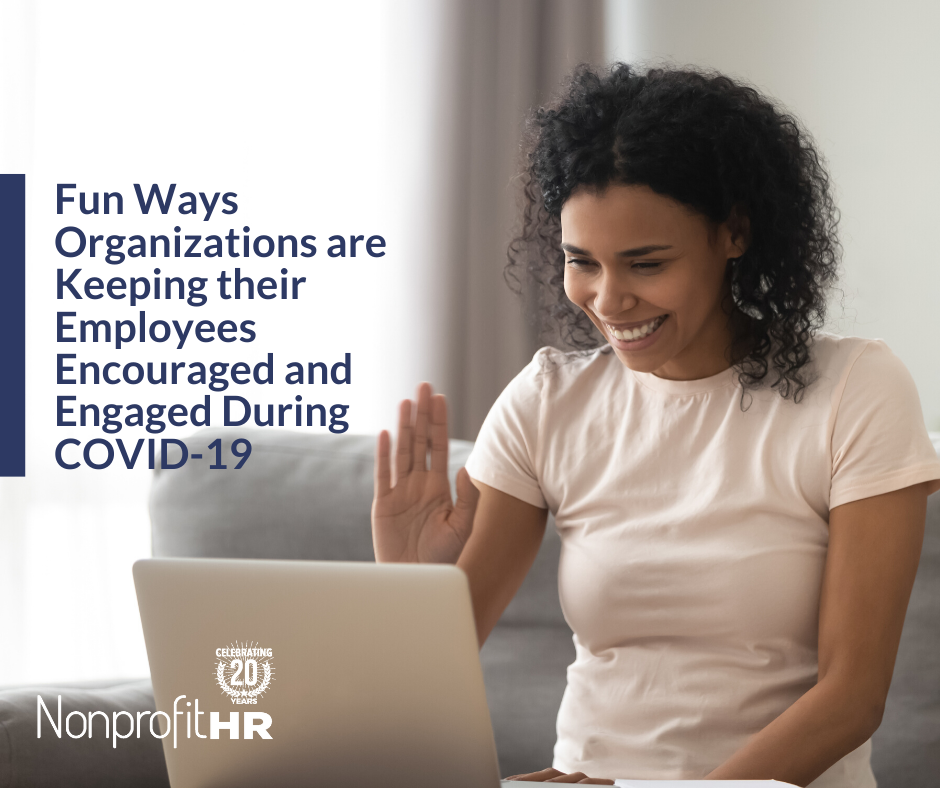WTOP: 5 ways nonprofits can…
Throughout the entire recruitment process, the goal of every candidate is to meet the expectations of the employer with the hope of being offered a position. For example, the candidate must look the part for professionalism and they must act the part to be marked a “cultural fit.” Most importantly, they must meet the outlined job qualifications. A long list of expectations, right? However, in recent trends, the job market has changed particularly in favor of job seekers as they are seeing an increase in employment options. This is especially affecting the nonprofit sector. As stated in Nonprofit HR’s 2016 Nonprofit Employment Practices Survey, “Since 2014 the second biggest challenges for nonprofit employers has been finding qualified staff.” In the face of such staffing difficulty, nonprofits must develop effective strategies to hire and retain those qualified candidates that so are few and far between. In this circumstance, there’s no better opportunity to prove oneself as an employer than through a seamless onboarding process.
Here are some suggestions for helping your organization meet the expectations of your future new hires:
Expectation # 1: Send new hire paperwork prior to the first day
In a recent webcast presented by the Society for Human Resource Management (SHRM), the presenter stated that almost 73% of new hires expect to receive their new hire and benefits paperwork prior to their first day. Some may call this “pre-onboarding” as is it allows for new hires to complete the necessary, though often burdensome, paperwork that would otherwise consume valuable time on their first day. Sending this information in advance demonstrates that your organization is proactive and organized. Also, if you’d like to have an impactful onboarding process, try incorporating a new hire checklist. A checklist will help you keep track of key action items that should be completed prior to the new hire’s first day. For instance, access to email and a clean desk space will show that you’re prepared for the new hire’s arrival.
Expectation # 2: Create opportunities to connect with the “distant” employee
We’re all aware of how anxious one may feel on his or her first day, which is why employers must put forth the effort to help alleviate those first day “jitters.” The well-known buddy system is a great way to help new hires feel supported by their new colleagues, but another great way is to designate a few employee representatives from different departments who can speak on the great experiences they’ve had with the organization. This opportunity can establish some rapport among different people with whom the new employee may not interact with on a regular basis.
Expectation # 3: Managers, Raise the bar…for yourselves
Managers play a crucial role in a new hires’ perception of an organization. In fact, it’s one of the major determining factors towards an employee’s future success. From day one, managers should proactively seek ways to develop a positive relationship with their new hires. A great way to initiate this is by sending a “welcome message.” Over the years, employers have gotten creative with how they welcome their new hires, so it’s important make the message a memorable one! Imagine the thrill a new hire would feel if his or her manager took the time to send a simple welcome email introducing them to all staff. This action will show new hires that you’re personable and genuine. Such soft skills will go a long way when it comes to communicating with your employees, particularly when having those tough conversations. A recent Gallup study revealed that employees who feel their managers are approachable are more engaged by 54%. When employees strongly disagreed with their managers being approachable, they were only 2% engaged and 65% disengaged. This study and many others will help you as the manager recognize your employees as people first.
So what happens after the excitement of the new hire orientation?
Expectation # 4: Understand that onboarding exceeds far beyond orientation
Profiles International stated a great definition for onboarding in which they defined it as a “systematic process that promotes a better understanding of the culture, mission, and goals.” By this definition, effective onboarding can create an opportunity to build a sense of connection both inside and outside of the workplace. Within the workplace, new hires can gain a sense of how they may fit into the organization and how their contributions are essential to the mission. Additionally, onboarding promotes employee productivity as it cultivates long-term relationship-building and access to information necessary to perform the job.
On a personal level, the connectivity may show through your interest in their personal lives. For example, if one of your employees enjoys cooking, buy a cheap cookbook and leave it on his or her desk with a simple note. When it comes to new hire onboarding, those little things can indeed become huge drivers for what all employers want: committed, loyal, and high-performing employees.
The next time you’re planning for your next new hire, remember that you’ll want to give them something to look forward to that will help them hit the ground running for success.





























